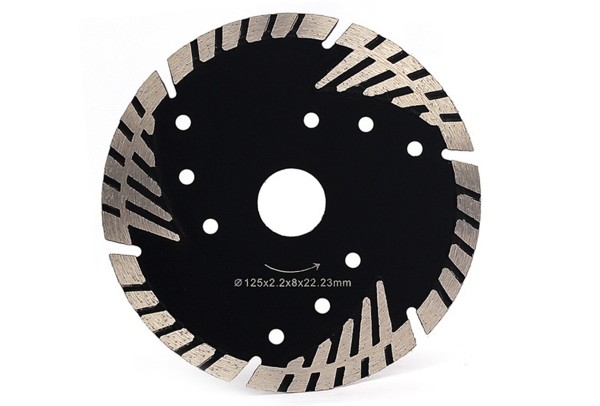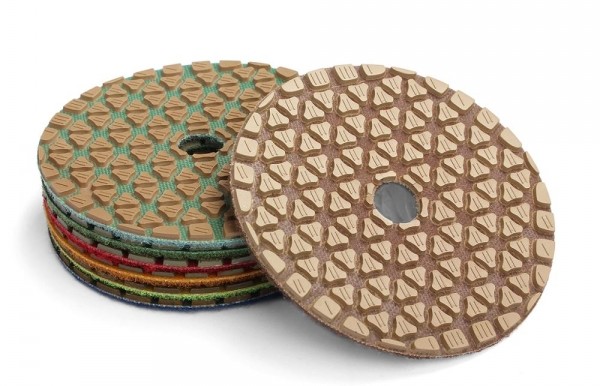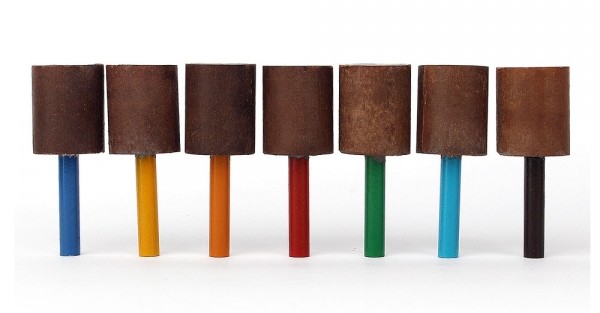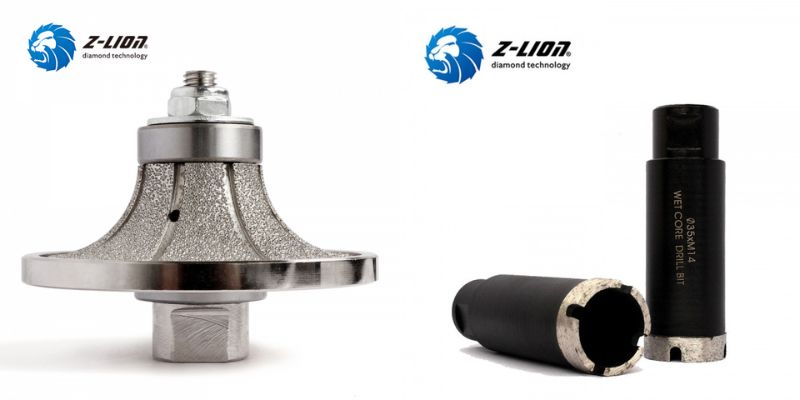Crafting Granite Countertops Made Easy
Granite countertops are known for their durability, elegance, and timeless appeal, making them a popular choice for modern homeowners and businesses. Behind the original charm of these countertops lies a complex series of processing techniques and procedures that are the basis of their manufacture. Let’s take a closer look at the basic methods used in granite processing.
Granite Sawing:
Key Steps in Countertop Manufacturing The creation of granite countertops is complex and meticulous, a multi-step process involving a variety of techniques and machinery designed to transform raw granite blocks into beautiful finished products. In the basic process, sawing takes center stage as a critical initial step that has a significant impact on the quality and economic viability of the final countertop. Sawing involves using a stone saw to cut granite blocks into rough slabs, usually 20 mm or 10 mm thick, or semi-finished products in various shapes, including strips and blocks. This rough machining process is the basic stage of granite countertop manufacturing and has a significant impact on the blank rate of the slab, the slab quality, and the overall economic benefits of the countertop manufacturing enterprise.
The sawing process relies on a series of specialized equipment that is carefully calibrated to ensure precision and efficiency in shaping the raw granite material. Commonly used sawing processing machines include frame-type large-scale automatic sand saws dedicated to granite, multi-blade two-way cutting machines, multi-blade computer-controlled granite cutting machines, cutting granite blades, etc. These advanced tools help achieve the desired size and shape, optimizing the yield of raw granite blocks and laying the foundation for subsequent processing stages.

Grinding and polishing:
The journey from sawn rough slab to polished granite masterpiece spans multiple intricate steps, each helping to enhance the stone’s visual and tactile appeal. The process uses diamond polishing pads and begins with initial rough grinding and leveling, followed by successive stages of semi-finishing, fine grinding, and final polishing. It is through these precise and carefully planned operations that the inherent beauty and decorative potential of granite are fully realized, resulting in a finish that fascinates and delights the beholder.

The grinding and polishing journey is made possible through a variety of cutting-edge equipment specifically designed to optimize precision, efficiency, and excellence in granite processing. Commonly used machines include automatic multi-head continuous grinders, diamond leveling machines, bridge grinders, disc grinders, reversible rough grinders, hand grinders, etc.
Cutting processing:
Granite cutting is the process of shaping and cutting rough or polished granite slabs to specific specifications and dimensions using specialized cutting machines. This process is essential in transforming granite into custom pieces for a variety of uses. Commonly used equipment for granite cutting includes longitudinal multi-piece cutters, transverse cutters, bridge cutters, cantilever cutters, manual cutters, and other advanced tools designed to ensure precision and accuracy in the cutting process. These machines play a vital role in the manufacturing of granite products in different industries such as construction, interior design, and construction.
Granite chiseling:
Granite chiseling is a traditional and complex process used to shape and refine granite into a variety of products. This method typically involves carefully carving the granite into the desired shape using hand tools such as diamond Burrs, hammers, axes, and chisels. Techniques such as wedge cracking, trimming, and polishing are used to achieve the desired surface, whether rock, textured, hammered, or smooth. In addition to hand tools, advances in technology have brought about the use of stone splitters, stone planers, automatic hammer chisels, and automatic sandblasters, which can further simplify and enhance the chiseling process, provide a wider range of surface treatment options and increase efficiency.

singeing process:
The singeing process, also known as the spray combustion process, is a technology that exploits the differences in expansion coefficients of mineral particles within the granite. By heating, some of the surface particles are loosened and burned away, creating a rough, undulating pattern that is both decorative and functional. The resulting rough granite slabs are ideal for non-slip floors and outdoor wall decorations due to their textured surface. This process typically uses automated granite singeing machines, allowing the technology to be applied efficiently and consistently. If you need more details or assistance, please feel free to ask.
Auxiliary processing:
Auxiliary processing in the stone industry involves a variety of machining and finishing operations to prepare cut and polished stone for specific applications. This can include grinding, chamfering, drilling, milling slots, and edges. Tools and equipment commonly used in these operations include automatic edge chamfering machines, copy milling machines, thin wall drills, handheld grinding and polishing machines, handheld diamond circular saws, diamond profile wheels, and drill bits. These tools and machinery are essential to achieve precise and customized finishes on stone surfaces. If you have any specific questions about these processes or the equipment involved, please feel free to ask for more details.

Inspecting and repairing:
Inspecting and repairing natural granite is important to ensure the quality of the final product. Manual repair work may involve techniques such as bonding and filling to address cracks, holes, and other defects. The use of automated continuous blow and repair air dryers can simplify and enhance this process, helping to reduce scrap rates. These advanced processing lines help maintain the quality and integrity of natural granite, ensuring the finished product meets the required standards.
Processing technology
Granite is a durable and versatile natural stone that undergoes a complex process and is then transformed into stunning surfaces in homes, commercial spaces, and architectural designs. Granite processing involves four main production lines: standard plate production, thin plate production, rough decorative plate production, and special-shaped plate production. Each production line contains specific processes designed to produce a variety of finished granite products.
Granite standard slab processing: The granite standard slab journey begins with the use of a crane to load the rough material onto a truck. The material is then transported to the working position of the frame sand saw and cut into rough boards. Subsequently, the blank board is transformed into a bare board through processes such as grinding, polishing, and cutting. Finally, after inspection, the smooth plates are packed and put into storage. The specific process includes block lifting, sawing, cleaning, inspection, rough grinding, fine grinding, polishing, cutting, trimming, final inspection, and packaging.
Granite slab processing: Granite slab production, named for its automated processing lines, involves a series of streamlined processes connected by raceways, unloaders, and lathes. The process includes hanging wool, sawing into thin plates, cutting, grinding and polishing, cutting, edge grinding, chamfering, groove milling, cleaning and drying, inspection and packaging, etc.
Granite rough veneer processing: This production line requires the semi-finished blanks to be sent to the automatic trimming machine through the raceway. The chisel-cutting machine uses a cutter head selected according to the required pattern thickness to cut various rough decorative patterns according to a predetermined trajectory. If a singeing board is required, use an automatic singeing machine to process the blank board. The process includes semi-finished raw boards, chiseling or singeing, cutting, final inspection, and packaging.
Special-shaped plate processing: This production line can meet users' specific requirements for the shape and specifications of granite slabs. Template design and production, such as round and oval table tops, oval hole bathroom countertops, flower window borders, etc. Then use a copy milling machine to process the required shape on the semi-finished board according to the template or computer preset program.
These four main types of granite processing production lines demonstrate the meticulous and complex process of converting raw granite raw materials into various finished products. The specific processes of each production line contribute to the diversity of granite surfaces and structures used in modern architecture and design.
 English
English  Português
Português  русский
русский  Chinese
Chinese  French
French  Japanese
Japanese  Spanish
Spanish 



